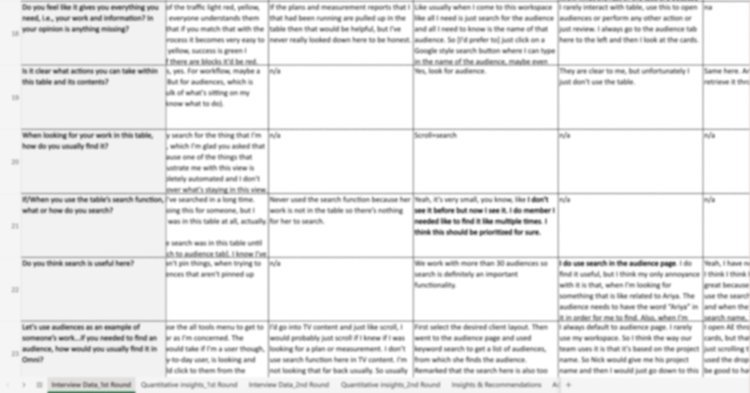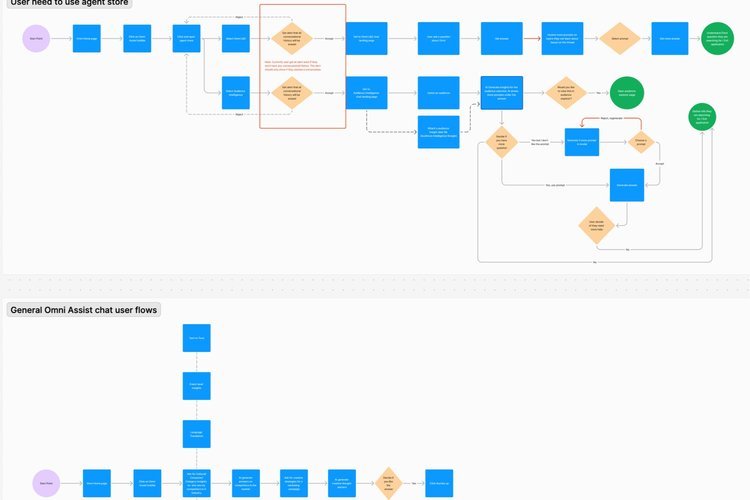
Case Study
OMni Assist (AI Agents)
Overview
Omni Assist is a virtual assistant that enhances the Omni workflow with Generative AI, offering insights, notifications, and recommendations at every stage.
Omni Assist (AI Agents)
AI-driven Platform creating productive partnerships between AI and Humans.
Role: Director of UX/UI
Company: Omni Assist (AI platform for enterprise workflows)
Challenge:
Design a cohesive, trustworthy AI-driven assistant for enterprise users across multiple workflow platforms.
Product Goals:
Automate Insights: Develop Omni Assist to quickly analyze large amounts of Omni Audience data and extract key insights that make audience segments unique and actionable for campaigns. This includes recommending similar or related audiences and integrating audience insights from other social, commerce, and retail media platforms.
Enhance Collaboration: Leverage Generative AI to summarize industry and cultural trends, synthesize work from all Omni applications, and improve notifications and alerts. This will foster better and faster collaboration across OMC agencies and with clients.
Improve User Experience: Simplify interactions by reducing the cognitive load on users. We introduced features like one-click workflows to pull data and auto-generate flowcharts, progressive disclosure to hide advanced settings until necessary, and automated taxonomy assignment based on campaign parameters.
Provide learning resources: Offer both live and on-demand training sessions to help users understand Omni Assist's functionalities and applications, ensuring that teams can effectively leverage its capabilities.
Leadership & Strategy:
Partnered with Product, Engineering, and Data Science to define vision
Led team of 12 designers across 3 product lines
Developed AI-integrated design system
Team Impact:
Scaled team from 5 to 12
Created centralized design operations
Mentored 3 emerging design leads
Reflection:
Learnings around trust in AI, transparent interactions, and scalable design systems.
Competitive Analysis
Evaluated each of our major competitors in the market, and pulled out feature comparisons on function, UX patterns, and interaction design to gauge standards and areas where we could innovate without causing users additional cognitive or motor load.
Research + Roadmap
Talked to key users and their teams to learn how the assistant could be most valuable. We realized we needed both a data-connected stand alone, as well as contextual, experience given the complexity of subject matter and user interface.
User Flows
By mapping out the different use cases, we defined each of the user flows to assign functionality and define the underlying user experience.





